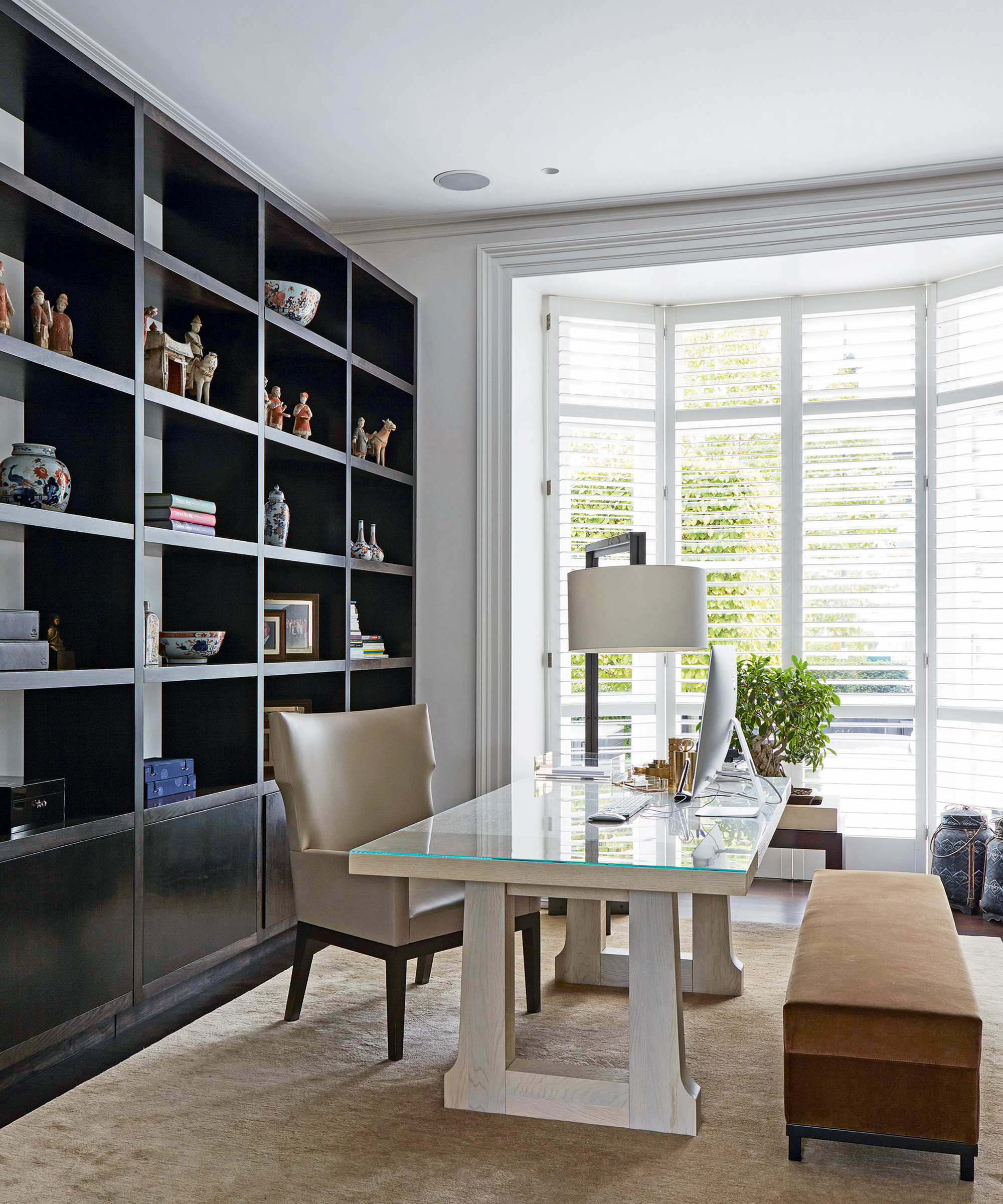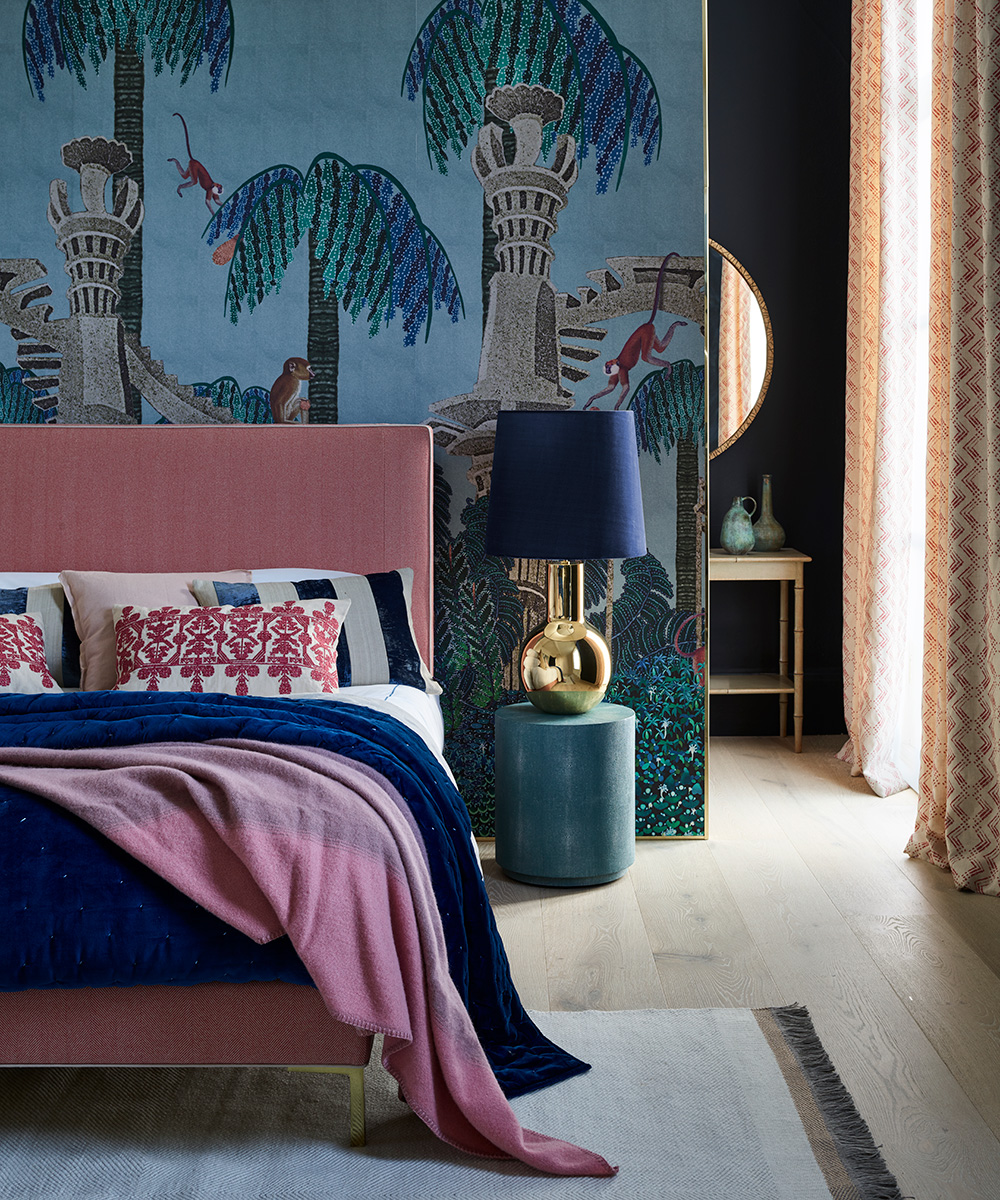Discover how to combat SAD this winter – with our harmonizing and brightening tips
Longer, darker evenings prompt a spike of SAD - here’s how to prevent it from affecting you, especially while working from home over the winter


As the evenings draw in earlier over the winter months, Seasonal Affective Disorder (SAD), starts to ramp up, and as many of us are working from home, finding out how to combat SAD is more important than ever.
SAD can cause irritability, lethargy and lack of interest in everyday activities, and as a lot of us are confined to a more limited space than in usual life it’s vital to check up on your own mental health and give yourself the best shot at health and happiness.
We’ve rounded up some tips and tricks to help you create a productive and harmonizing home office space in order to ward off the winter blues.
To crack down on this seasonal issue from the get-go, have a look at our selection of the Best SAD lamps.
1. Embrace natural light

Natural light is one of the most powerful tools in beating SAD and boosting your productivity.
'We often underestimate how much of a difference natural lighting can make,' notes Jason Peterkin, director at 247 Blinds. 'Whether your home benefits from large, airy windows or not, the right window treatment can help you to open up your home and make the most out of natural light.'
As the number of hours of natural light have reduced as winter creeps in, it's important to utilize it whenever possible, and to ensure any home working spaces are kept as light and bright as possible.
Design expertise in your inbox – from inspiring decorating ideas and beautiful celebrity homes to practical gardening advice and shopping round-ups.
Jason advises to choose a versatile window treatment, to allow you to maximise the natural light in your home. 'We’d recommend choosing a window treatment such as a roller blind that can be opened in full for maximum light exposure during the working day, or a day-night blind that allows you to take advantage of sunlight and privacy, but is perfect for controlling the amount of light filtering into a room too.'
If natural light is especially limited in your home, try using a SAD lamp to get that Vitamin D going, and make sure to get out for a stroll while the sun is out.
2. Go greener

Houseplants are beloved year round, but in the winter, with many outdoor trees and shrubs fading, it's especially helpful to have that hit of fresh nature inside.
‘Plants are scientifically proven to increase air quality: they release oxygen and absorb carbon dioxide. This not only freshens up the air, but also eliminates harmful toxins,' says Sophie Lewis, Interior Designer and Owner of Husoe Home.
Plants look great and will be beneficial in any room of the house, but when working from home, make sure to place a few in your office space. 'There have been a number of studies which have proven that indoor plants improve concentration and productivity by up to 15 percent, reduce stress levels and boost mood - which makes them a perfect addition for those working from home,' says Sophie.
'Choose plants with lots of greenery and broad leaves for the home office area as they will help to regulate humidity and increase your levels of productivity. It’s proven that seeing greenery and nature helps us to clear our head and feel more calm.'
3. Consider your color choices

The environment of your working space has a huge impact on your mood, mental health and energy. By making the right color choices you can essentially hack your brain into working the way you want it to.
'Choosing light, natural colours is the perfect way to add a soothing finishing touch to your interiors and encourage a serene mood,' notes Luck Ackroyd, Head of Design at Christy. 'Incorporating deeper shades of green, blue and yellow can also help promote feelings of optimism, growth and positivity, as they encourage images of outdoor greenery, the ocean, sunshine and the natural world.'
Even is a full blown redecorating project may not be on the cards right now, once you're aware of the right shades to boost your happiness and productivity, you can incorporate these in smaller ways, such as cushions, throws and desktop accessories.
4. Embrace aromatherapy

Smell is one the the most important senses for changing the atmosphere in a room. The right type of energizing fragrance will keep productivity and drive high, while calming sense help us unwind from a hard day's work.
Nicola Elliott, founder of Neom Organics, agrees. 'Small changes, such as using essential oils to create the right moods in the right places of your home, can have a surprisingly big impact. The right scents and oils can help you stay productive, feel calm and happy and generally look after your wellbeing. Plus, with our homes now becoming our offices too, sometimes we need a little help to just get us in the zone and ‘crack on’.'
Look to upflifting scents like pine, eucalyptus and citrus to help keep you going through the workday, and turn to lavender, jasmine or cedarwood.
For our favorite scented products, take a look at our Neom Organics sale page.
5. Keep sleep separate

There is simply no way to stay calm and productive without getting a good night's sleep, and for that it's important to create the very best sleep environment you can.
'Think of your brain like you would an electronic device,' advises Sleep expert Dipti Tait. 'You use it all day and at night you need to recharge the battery - sleep is essential for your brain and body. It’s vital that your sleep health is optimized for your mental health to be maintained, this is why our sleeping environments must be healthy.'
We've all been told for years now to try and remove devices from bedrooms, in order to switch off from the day, yet many of us may be working from our bedrooms due to lack of space. To get around this, Dipti suggests to 'introduce rugs, plants or even change your furniture around to help create set ‘zones’ for work and sleep. Your bed should be a psychological trigger for rest, it should look comfortable and inviting, ready for when you climb in it at bedtime.'
Your work devIces, papers and notebooks need to be considered, too. 'Storing away bits and bobs from the working day can help encourage a balanced working routine - especially if you’re stuck for space,' says Jonathan Warren, director at Time4Sleep. 'It’s important to try and return the room back to a space of serenity before settling down for sleep.'

Thea Babington-Stitt is a Content Editor at Future. She has been an interiors journalist for nearly 10 years and has held positions at LivingEtc, Country Homes & Interiors and Homes & Gardens. Currently, she is writing for Ideal Home and Style At Home's websites and magazines.